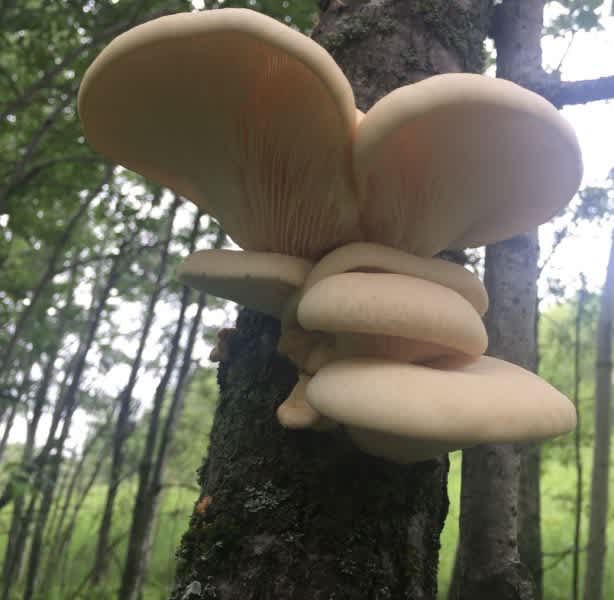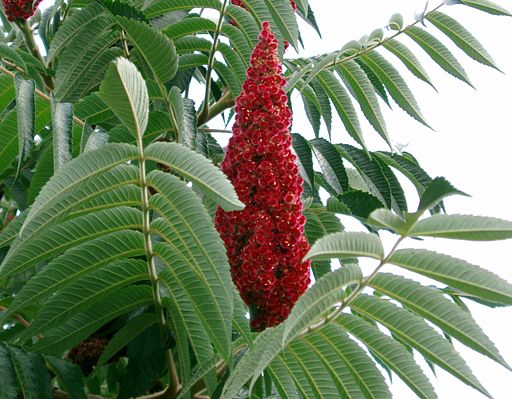Learn to Harvest the Outdoors – Safely!
OutdoorHub Staff 08.30.16

Foraging for wild edibles while you’re camping doesn’t mean living entirely off the land, but it can add a sense of fulfillment and a bit of fun to your trip. And though the thought of popping something you’ve harvested yourself into your mouth is somewhat scary, taking the time to properly educate yourself well beforehand will subdue those fears.
The best place to start is to study (yes, study, not just read) a trusted book—or several—on the subject. Online resources that delve into great detail on particular wild edibles also hold a wealth of information.
With this type of research, you’ll learn where wild plants grow, when they ripen, which parts of the plant might be inedible—perhaps even toxic—and very importantly, what other types of plants, shrubs or trees are commonly associated with the one you want to harvest.
The next step is to find a local wild edibles mentor—an experienced person who can provide in-the-field instruction, and more importantly, keep you from making a painful, if not deadly, mistake. Too many novice foragers skip this step, though we can’t stress enough its importance. One expert put it bluntly: “Beginning foragers often know just enough to get them into trouble.”
Once you are foraging on your own, it’s still a good idea to have your mentor check your bounty before consuming it—which brings us to the No. 1 rule of foraging:
NEVER eat any wild plant, mushroom or fungus that you can’t identify with 100 percent certainty!
Finding a mentor isn’t as difficult as it sounds. A search of the Internet will likely turn up one, or several, people who host wild edible tours local parks, nature centers and neighborhoods. That person might become a mentor, or know someone in his or her network who is willing to take on a dedicated trainee.
Common Wild Edibles


Wild raspberries and blueberries are easy to identify, and if you’re lucky enough to find them, make a fantastic addition to camp flapjacks.

The fiddlehead (young) stage of the ostrich fern is a springtime delight, especially when sautéed in olive oil, with a little minced garlic, salt, pepper and lemon juice.

Make staghorn sumac sun tea by steeping five or six bunches of the red berries in a gallon of water until the liquid has a pinkish hue. In mid-August it makes a refreshing, tart iced beverage that’s high in vitamin C, and has other medicinal qualities. Before drinking, strain the liquid through several layers of cheesecloth to remove plant debris and insects.

Chanterelles are perhaps the gold standard among summer mushrooms. They are simply delicious. Do not, however, confuse them with their inedible and toxic look-alikes: the false chanterelle and jack o’ lantern mushrooms.
Oyster mushrooms (photo at top of page) are cultivated nearly worldwide, but they can be found growing on decaying trees almost everywhere in the U.S.

Morels are the focus of springtime mushroom hunters wherever they grow. Sautéed, they go well with fresh-caught trout. Or, dehydrate them and then rehydrate them later for a side dish to venison or pheasant. Beware, however, of the look-alike and toxic false morel.

The shaggy mane, sometimes called inky cap, is a delicious late summer/fall mushroom. Harvested while the cap is still bullet shaped, the mushroom has a fine, light flavor. If you are certain of its identity, it’s best to prepare them immediately because they don’t keep well.

The summer mushroom indigo milkcap is unique because it “bleeds blue” when cut, and its interior is a vivid blue.
Put in the effort to become a skilled forager (emphasis on “skilled”), and always keep the No. 1 rule sacred, and you can add a whole new dimension to your camping adventures.

